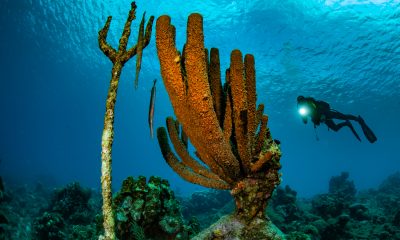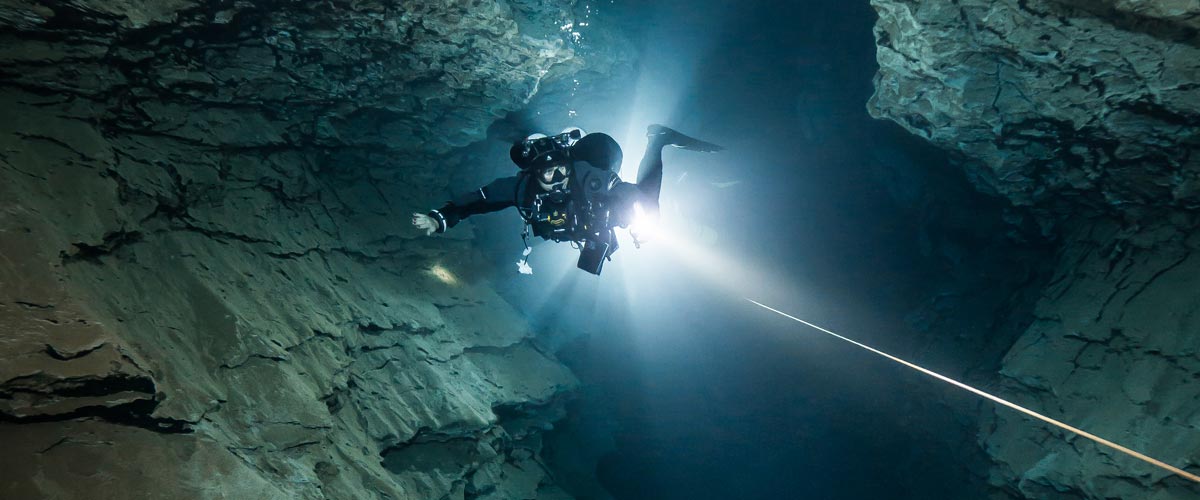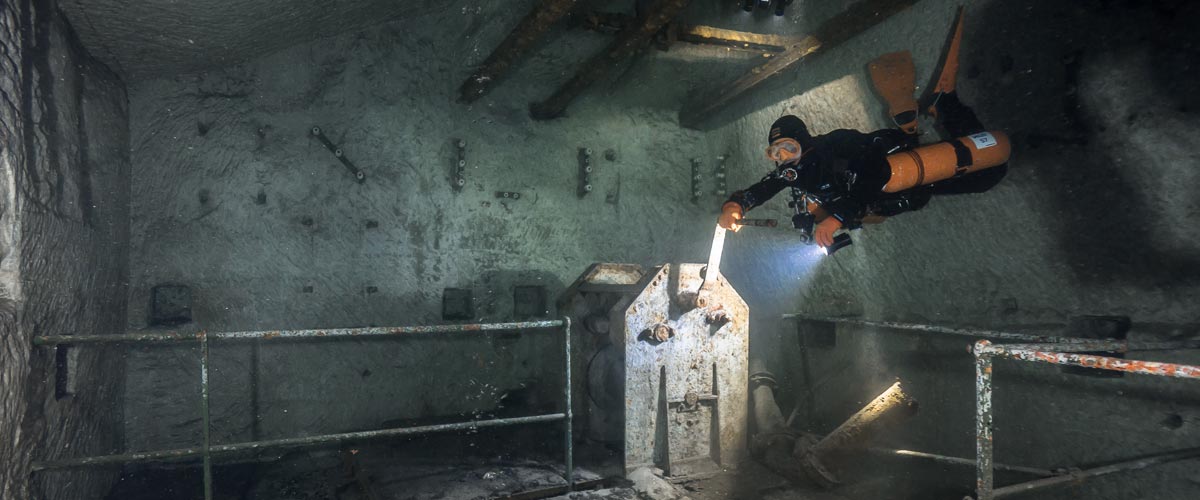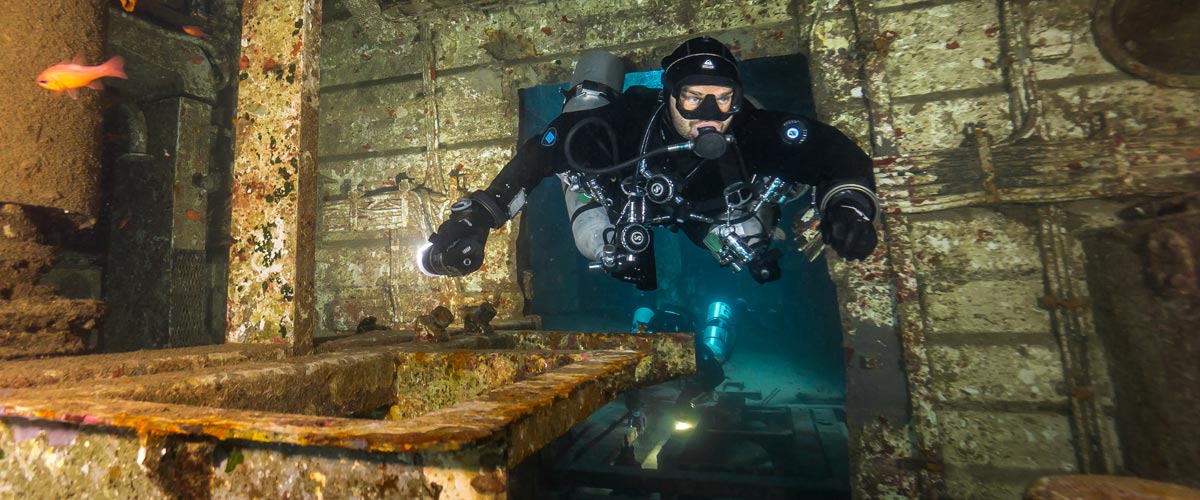Dive Training Blogs
DIVE ODYSSEY: A Day in the Life of… an Underwater Actress (Watch Video)

Gemma Smith talks about her role in Dive Odyssey. You can watch this amazing short film here:
The sport of diving always reminds me of an oak tree: there is the main trunk from which everything else grows, but there are also hundreds of branches reaching out in all directions, eager to be independent and different. This is exactly how diving is! From the main interest we all have in our underwater world there are a never-ending variety of new branches to go off and explore, and something new to learn, enthuse or inspire everyone, regardless of age, gender, or experience. I don’t think it is possible for anyone to ever be bored as a diver! In this series I want to explore some of the many possible careers and paths available to those of us lucky enough to have access to the many oceans, lakes, rivers and waterways on our planet, and in this article I’ll take a closer look into the life of an underwater actress, and in particular what it is like to work on an underwater filming project.
The Birth of Dive Odyssey
Sometimes I question my sanity. I really do. It’s the middle of winter with just a few weeks left until Christmas. A couple months back, if I would have imagined life at this time, I’d see myself sitting at home in front of a roaring fire. There would be piles of chocolate and holiday food around me, and I would generally be enjoying some festive cheer. The life of someone working full time in the diving industry tends to involve long hours and lots of physical work. We take our breaks as and when we can, and Christmas is one of the few times of the year where we can totally stop. Where am I though? Well, I’m not at home in front of a fire, and there is a distinct lack of chocolate and Christmas cake. I’m in Finland. In the middle of December. And I’m getting ready for one of the most unusual dive projects I’ve ever been involved in.
If you had asked me a while back if I’d ever thought of being an actress, my answer would be a resounding ‘NO’! My sister was the accomplished actress in the family, starring in school plays right from a youngster all the way through her teenage years. I couldn’t imagine anything worse! No, l was more than happy to leave that side of things to the professionals. I would never agree to act…would I?
Sometimes someone comes up with an idea that is so crazy and unique that you know that you just have to do it. In this case, for me, there was no question in my mind. Janne Suhonen, along with Antti Apunen, is one-half of the legendary Scandinavian ‘Divers of the Dark’ filming team. For years I had admired their work. From the iconic shots of Ojamo Mine in their homeland of Finland to their French cave diving series of films and photographs to their masterpiece of a book showcasing the Molnar Janos cave in Budapest; as far as I was concerned their work was unrivaled. Having had the chance to meet them several years back at a dive conference we had struck up a friendship. So when Janne contacted me about being involved in his next project I immediately said yes. This was a dream come true for me. I’d done lots of underwater modeling for photographs before, so I wasn’t worried. I mean, it was modeling I’d be doing right? Well, kind of. I would indeed be in front of a camera….but he was making an underwater movie and I’d be one of the actors.
We all love diving, of course, we do. However, even the most zealous dive enthusiast has to grudgingly concede that as a spectator sport it is lacking slightly. Janne dreamed of changing that. Inspired by the classic movies such as Blade Runner, 2001 – A Space Odyssey, and of course James Cameron’s own underwater masterpiece The Abyss, his idea was to make an underwater sci-fi movie of sorts. Nothing even comes close to the otherworldly feel and sense of the unknown of outer space as the underwater world does, so why not combine the two? Diving needs to have a fun as well as a serious side. After all, isn’t this element of escapism one reason we all started this sport in the first place? And from this seed of an idea, the concept for the movie ‘Dive Odyssey’ was born.
Arrival
A project of this size is never easy from a logistics point of view. Between arranging all the gear and gas, the timings and schedules of various elements, and trying to bring together a motley crew of international divers from various corners of the globe all at the same time, Janne did not have an easy task on his hands. The plan from the outset was to have the film split into three distinct phases, with this first phase being filmed at the famous Ojamo Mine just outside Helsinki. It’s late one evening in December when the British contingent, myself among them, arrive to start filming. Everyone on the project has been handpicked for a certain role. TV presenter and full-time adventurer Andy Torbet and I are the two ‘actors’, we have multiple cameramen and a lighting crew, as well as surface support for when we are in water. Most of the team have worked together before, and we are all friends and colleagues. This is just as well, as Janne’s plan is by no means simple, as we are about to discover…
The Story
With the international team now assembled, it is our chance to hear for the first time in full Janne’s dream and vision for his film. The story will have no words or spoken voice. It will rely totally on the ambience, evocative lighting, the stunning underwater scenery and locations, and specially composed music to tell the narrative. Detailing the meeting between an earthly human Explorer meeting an otherworldly underwater ‘Being’, it will follow their subsequent journey together. The location for phase one of the shoot would be without a doubt the most dramatic. Filming and working at depths of up to 80m/260ft in temperatures of 1-2 degrees Celsius/34-36 degrees Fahrenheit for hours at a time, the whole team would be equipped with CCRs, not to mention plenty of thermals and heated vests! Andy and I even had special custom-made gear for the roles; he as the ‘Being’ in a steel grey colour scheme, and I as the human Explorer in bright orange. Drysuits, scooters, rebreathers, tanks, everything was colour matched to our specific roles. While a bright orange JJ rebreather would not necessarily have been my first colour choice, when it is seen on camera it truly comes alive. There is no question that a good director has more to think about than ‘just’ directing.
A typical dive day
Due to the limitation in access to the mine because of the commercial diving school based at the site, we are restricted to late afternoon or evening dives only. This actually works very well, as there is a surprising amount of dry land work to do first. Being the professional that he is, Janne has hand drawn and storyboarded every single scene he wants to film. This allows not only him to envisage what he wants, but is a huge help in allowing the actors to understand what is needed from them. Plus the fact that at 80m/260ft in this kind of temperature we really need to nail the shots the first time around. No one wants to spend more time completing cold water decompression than they have to. After the morning wake up call and a warming breakfast at the nearby lodge where we are staying, the team normally arrives at Ojamo around midday. This gives us all a couple hours to strip and prep all rebreathers from the day before, and complete checks on all gear. The freezing temperatures are a constant reminder of just how on the ball we need to be. What might be a small or annoying issue in warm water (a flooded drysuit say) could easily turn into a really serious problem in these conditions. When everyone is sure that their gear is good to go, its time for the specific filming briefing. With the storyboards as our guide, we do dry land run-throughs of everything we want to do underwater. Practice on land makes the task of coordinating underwater so much easier.
Our aim is always to get in the water around 5pm, but things often take longer than anticipated on a film shoot! Getting in the water around 6pm and out around 9pm is a good day. It’s often easy to forget just how involved these dives are. We are all diving CCR with a minimum of two bailout tanks. We are working at least 500m into the mine, so to maximise bottom time Diver Propulsion Vehicles are used to get to the particular location for the shot more quickly. We are diving in an overhead, so all the gear needed for ensuring safety in that environment (primary light, two back up lights, reels, spools, arrows and cookies, and so on) also has to be carried by every diver on every dive. Add to this needing enough drysuit, dry gloves, and enough thermals to remain safe and comfortable in this water temperature. Oh, and at the same time as all this, remember that you are a human Explorer interacting with an otherworldly ‘Being’ and act accordingly! I was only glad that I didn’t have to deal with a camera as well! This was some of the most technically challenging, not to mention thermally tough, diving I’ve done. It was also incredibly fulfilling. I count myself lucky that I was able to work with such a professional team on my first film shoot, both in my fellow actor and in the amazing lighting and filming crew.
Post-production
At the end of the day, I had the easy job. Now it’s up to the director to make a coherent whole out of the scenes we filmed. Trying to tell a story with no dialogue is not going to be easy, but I know if anyone can do it Janne can. From here comes the editing, colour correcting, general post-production, and the composing of music to bring this mini-film together. And this, after all, this is only phase one of filming! Now some of the team go on to the Plura cave system in northern Norway for the above water snowy wilderness sequences, as well as the reshooting of any shots as required, and finally on to the pool in Helsinki for the grand finale of the adventure the ‘Being’ and the human Explorer have shared together. It’s been over 18 months since first filming, and work on the project is still ongoing. I can’t wait to see the finished film, but whatever happens its been an incredible experience. I’ve learnt so much and worked with an amazing team, and I don’t think you can ask much more than that.
To find out more about International Training, visit www.tdisdi.com.

Blogs
Intro to Tech: What is it about?
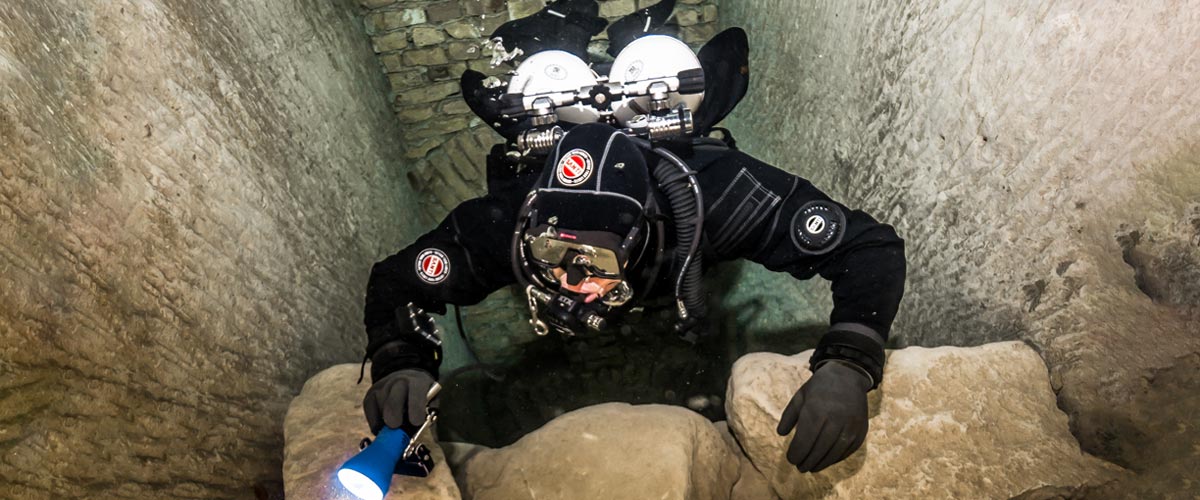
Article by José Pablo Mir
Pictures by Cezary Abramowski
The world of technical diving is exciting. It opens the door to new sites, depths, and bottom times. More importantly, it opens our minds to a new way of planning, facing, and experiencing dives, even those not purely technical.
Becoming a technical diver is a process, and like in other aspects of life, we should find the proper entry point that suits us best based on our knowledge and experience. The Introduction to Technical Diving course from TDI -the world’s largest and most recognized technical diving teaching organization- is the best option for divers who have yet to gain experience in the fundamental aspects of this new practice. The course’s content and its embrace of new techniques and technologies make it possible to acquire a solid foundation to learn and gain experience in this practice properly.
Becoming a technical diver is not something that happens overnight, whether deciding to become one or receiving a certification card stating we are now technical divers. It is a slow process extending farther away than any introductory course. It requires effort and dedication. But it will bring us satisfaction from day one -or two.
It is a matter of mentality
First, we must understand and accept that technical diving, involving greater depths, longer bottom times, exotic gases, virtual or real ceilings, and more, comes with higher levels of risk than the sport diving we have been practicing until now.
Although this discussion usually starts with a warning about risks, as I’ve done in the previous sentence, our practice is not a game of chance.
Technical diving is a rational activity that requires maturity and good judgment, and we will put everything into ensuring that each dive is a successful one -meaning we return from it safe and sound. With this understanding, we will strive to establish a mental attitude more aligned with our practice and its realities.
This new “technical diver” mindset we will develop will lead us to be more cautious in our executions, more analytical in our plans, more rational in our strategies, and more detailed in our procedures.
Experience will keep teaching us to know ourselves better, to keep our anxiety and other emotions under control, and to manage our impulses. Over time, our senses will sharpen, and we will be more attentive to the particulars of the situation we find ourselves in.
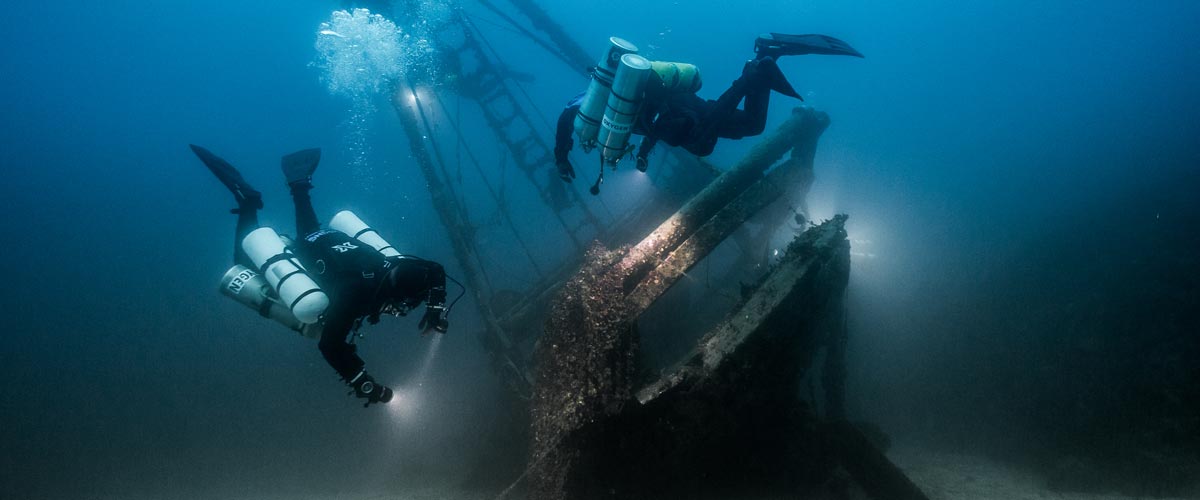
Strategies and procedures
Our strategies, those broad guiding lines tracing the path to follow, from how to approach planning to where, with what, and how we are willing to get there, will be more specific and more practical. Not because they magically become so, but because we will consciously and deliberately frame them that way.
We will establish clear, concise, and realistic procedures. Not only for the undesirable situations that may present themselves but also for those that are part of our dive objectives.
Even though, as technical divers, we often use equipment different from what we were previously accustomed to, it is essential to note that the gear does not make the diver. In a way, we could consider such equipment as the necessary tools to implement what our goal seeks to achieve, according to our strategies and procedures.
Technique plays an important role
We must put our greatest effort into learning and perfecting the different techniques we will be acquiring. Buoyancy, trim, propulsion, cylinder handling, deploying DSMBs and lift bags, valve drills, and more are essential skills we must begin to master to progress in our art. What we cannot do, when we need to do it, can harm us.
Our techniques must be effective and achieve the purpose for which they were devised. But they must also be efficient and require the least resources possible, including the time they take and the effort they demand. Effectiveness and efficiency will prevail over beauty and other considerations that may come to mind, although none of them should be mutually exclusive. A technique executed efficiently and effectively tends to have an inherent beauty.
Refining techniques is a lifelong mission. Some of them will be easy to master from the go; others, on the other hand, will be our life mission and will require many repetitions just to resemble the idea we have in mind of how they should be executed.
We must consider the environment
Our learning, the needs and musts of the practice we engage in, the experience we gradually gain, our strategies and procedures, and even our equipment and tools change with the environment.
Diving in the ocean, everything about us must be suitable for ocean dives. Conditions there rarely emulate those found in a pool, lake, or river. Variable winds and currents, greater depths, visibility conditions, other divers with uncertain skills around us, marine life, maritime traffic, distance from the coast, and many other factors add complexity and uncertainty.
It is never necessary to master the pool on the first day, but planning and aspiring to gradually cope with the ocean’s conditions is essential.
The cost of good training
We are aware that our resources are often scarce in relation to the possibilities of use we could give them if they were not. To a greater or lesser extent, we are part of the economic reality in which we are embedded.
Fortunately, the cost of good technical diver training is not an entry barrier. Comparing training and equipment costs, we see that the former are generally lower. Yes, lower cost for personalized service, essential to our future
performance and safety, than for a series of mass-produced products that are mere, albeit necessary, tools for an end.
The value of good training
The value of the training we received encompasses a range of characteristics, from emotional and methodological to technical and technological. TDI and its Introduction to Technical Diving course offer a deep and modern approach, with a teaching strategy that aims to create thinking divers, not merely obedient ones.
As technical divers, our knowledge is our primary tool. In this type of activity, what we don’t know can harm us.
Is this course optional?
Unfortunately, the fact that this Introduction to Technical Diving course is not a prerequisite for any subsequent training is an invitation to consider it optional. And we all know what usually happens to “optional” under budget constraints.
However, this course should be seen as optional only by those divers who are somehow familiar with the use of technical equipment, who have a mindset more in line with the requirements of this type of diving, who plan and execute the dives the proper “technical” way, who know their gas consumption rate, who are not intimidated by non-decompression tables, who feel comfortable using their dive computers, and know the techniques and have at least an acceptable level of buoyancy, positioning, and propulsion. Those can go straight to a more advanced training course, such as TDI’s Advanced Nitrox.
We must ask ourselves whether or not we are in that group.
Remember our goal: to have fun
Recreational diving is our passion. Jumping into the water carrying heavy equipment and having properly dotted our I’s and crossed our T’s have only one ultimate goal: fun. This is the activity we have chosen as a hobby. We must enjoy it; it must give us pleasure and make us vibrate.
Having a good time is not optional!
Blogs
Four opportunities to go pro in 2024 with Dive Friends Bonaire
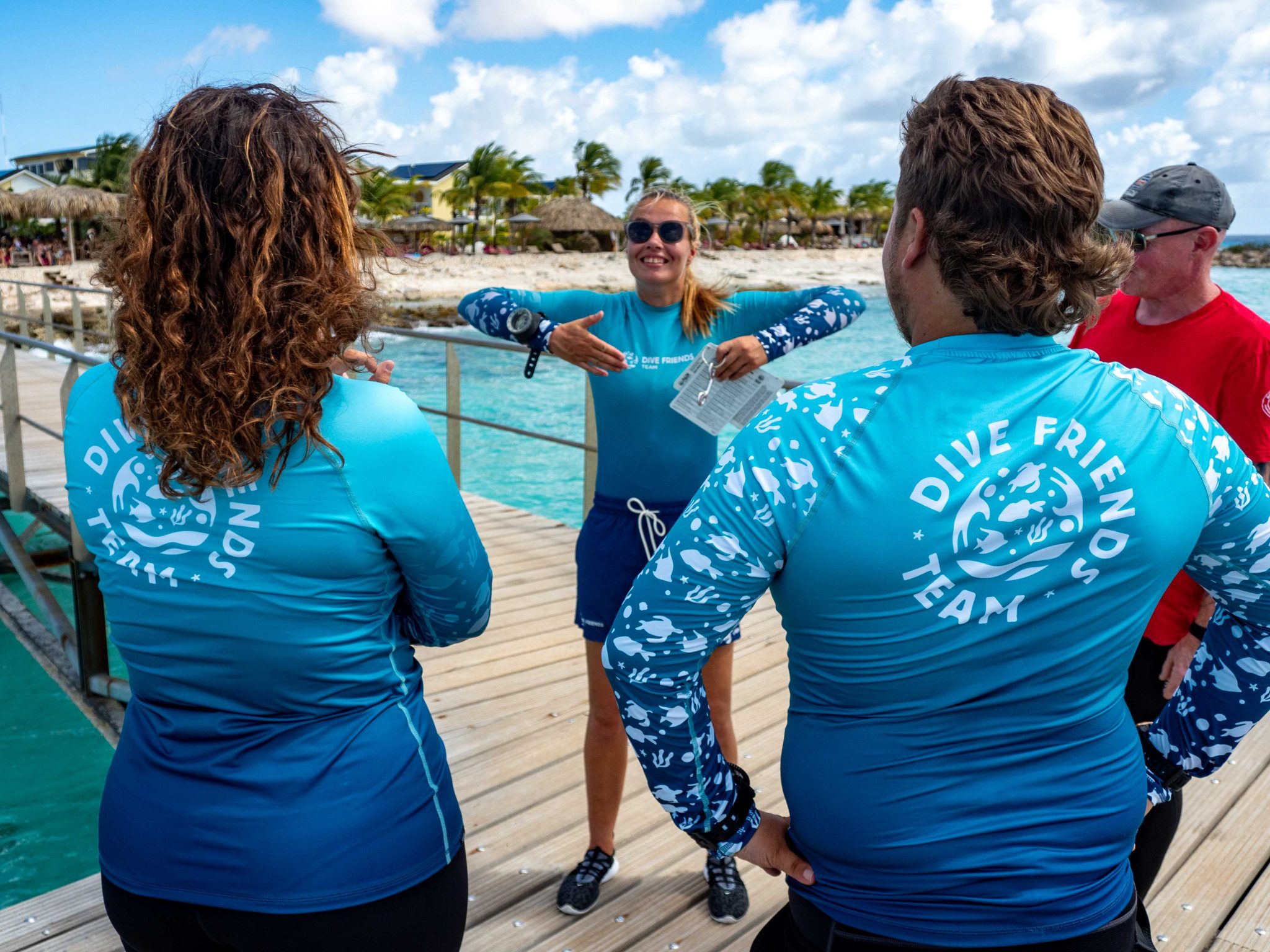
Dive Friends teaches the Instructor Development Course (IDC) several times a year to students who are eager to share their passion for diving with the world.
Dive Friends is known for the personal approach throughout the course. Their in-house course director will lead the students through every essential step, mentoring them to achieve their fullest potential as a dive instructor.
Applications for the following IDC start dates are now open:
- 12 April
- 5 July,
- 20 September
- 29 November
Partnership with Casita Palma
If the student opts for the IDC-Deluxe or IDC-Supreme package, their accommodation will be arranged for them at Casita Palma. This small and quiet resort is within walking distance from Dive Friends Bonaire’s main dive shop location and has everything you need to relax after an intense day of IDC training. Breakfast is included, so the student will always be fuelled and ready for their day.
Contact Dive Friends Bonaire’s Course Director Eddy for more information: coursedirector@divefriendsbonaire.com.
-

 News3 months ago
News3 months agoHone your underwater photography skills with Alphamarine Photography at Red Sea Diving Safari in March
-

 News2 months ago
News2 months agoCapturing Critters in Lembeh Underwater Photography Workshop 2024: Event Roundup
-

 Marine Life & Conservation Blogs2 months ago
Marine Life & Conservation Blogs2 months agoCreature Feature: Swell Sharks
-

 Blogs1 month ago
Blogs1 month agoMurex Resorts: Passport to Paradise!
-

 Gear News3 months ago
Gear News3 months agoBare X-Mission Drysuit: Ideal for Both Technical and Recreational Divers
-

 Blogs2 months ago
Blogs2 months agoDiver Discovering Whale Skeletons Beneath Ice Judged World’s Best Underwater Photograph
-

 Gear Reviews2 months ago
Gear Reviews2 months agoGear Review: Oceanic+ Dive Housing for iPhone
-
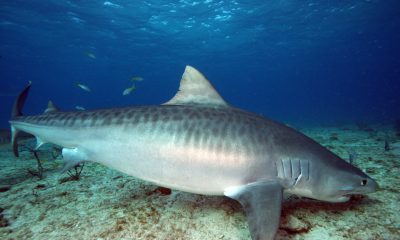
 Blogs3 months ago
Blogs3 months agoThe Thrilling Encounter with Tiger Sharks at Beqa Lagoon’s ‘The Colosseum’ with Coral Coast Divers











